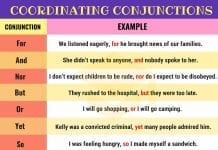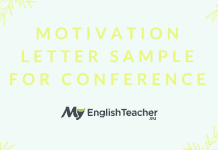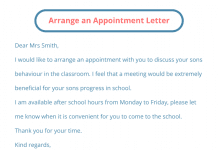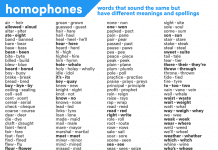So far I showed you Formal and Informal Email Phrases – from Greetings to Closing Phrases! Now I want to highlight GREETINGS for Emails.
List of Greetings for Emails
Simple and Informal
- Hi [Name],
- Hi there,
- Hey [Name]!
- Hi, how are you?
- Congratulations on [person’s achievement]
- Hello from the other side
- It’s me again
- Hey, did you have your first coffee already?
- Hey, it’s me
- Greetings
- Don’t worry, I’ll keep this short.
- Happy Monday!
- Hi. Just a quick note to tell you …
- Thanks for your email. It was great to hear from you!
- I wanted to ask you if …
Formal Greetings
- Dear [Name],
- To whom it may concern
- Good Afternoon
- Allow Me to Introduce Myself
- Hope this email finds you well
- I’m reaching out because …
- [Somebody] recommended getting in touch with you
- Dear Human Resources Manager
- It’s my pleasure to inform you…
- I’m emailing you to…
Follow-up Greetings
-
- I am getting back to you as we agreed
- I am following up on our call
- As I promised here is an update
- Here I am with the details about …
- Just checking in…
- Do you have any updates?
- Are you still interested?
- Sorry, it took me a while to get back to you.
- Thank you for your e-mail regarding the…
- With reference to our phone conversation…
- Can you please let me know if you are available on the 10th of September?
- I would appreciate it if you could send me a reply to my previous email.
- Can you please call me back regarding our last meeting?
- I was wondering if you were able to check our products since our last talk.
- We are happy to let you know that you’ve been selected for the marketing assistant position.
- Please let me know if I can be of further assistance.
- If you need any help, please let me know. I would be happy to help you! (my favorite)
Simple and informal Email Greetings
1. ‘Hi [name],’
2. ‘Hi there,’
3. ‘Hey [name]’
are very similar and can be interchanged. Since they are very casual you can use any of them, and they have the same effect. When using them you’re showing the person you are writing to that you’re approaching them in a casual manner, about a wide range of possible topics. By using this greeting you are establishing a level of ease and casual conversation between you and the person you are writing to.
4. ‘Hi, how are you?’
is very similar to asking that in real life. When you ask a person how they are you make them feel like you care. The email doesn’t start as formal, and you are not heading straight to the point. It’s good when you want to make the person you are writing to feel welcome.
5. ‘Congratulations on [person’s achievement]’
is used when you want to start with a topic about the person you’re writing to, and not something else. It shows that you have respect for their achievement, and you have faith in their reply. By starting your email like this it’s not just about business, but also about the person you’re writing to.
6. ‘Hello from the other side’
is very casual. It implies that since you’re not physically talking it’s ‘from the other side.’ It’s also a bit funny, so maybe use it when talking to someone you’re familiar with, or you want to be really casual during the correspondence.
7. ‘It’s me again,’
is a simple follow up. We use when you’ve already contacted the person before, and now you’re doing it again.
8. ‘Hey, did you have your first coffee already,’
is both a greeting and an invitation. So be careful how you phrase it after. You can make it a very informal introduction, and casually chat from there. Or you can invite the person for a coffee. It depends on what you ask next.
9. ‘Hey, it’s me,’
is very casual and used with people you already know. It can be used in any situation, just a chat, or even a work email. As long as you both know each other you can start the email this way, and then ask anything you want.
10. ‘Greetings,’
is a mix of both formal and informal, and it depends on what you write afterwards. It can be an informal greeting to someone from work, or a formal greeting to someone you work with or want to work with. There are many ways to use this since it’s neutral and versatile.
11. ‘Don’t worry, I’ll keep this short’
is very literal. It’s used for short correspondence and tells the person you are writing to that you’ll get straight to the point. It’s neutral so you can use it whenever you need to make the email short.
12. ‘Happy Monday’
is something between a greeting and wishing someone a good day. It shows that the correspondence is going to be light, simple and that you wish the person you are writing to well. Use it when you want to start your email on a positive note.
13. ‘Hi, just a quick note to tell you’
is also very literal. Use it when you want to make the correspondence quick and get straight to the point. It also tells the person you are writing to that there is something they should look at. The note in this situation is the topic you are going to write about.
14. ‘Thanks for your email. It was great to hear from you’
is a good way to start your email when you’re writing back to someone. It’s fairly neutral, so you don’t have to know this person. It’s used when writing back and lets the person know you read their previous email.
15. ‘I wanted to ask you if’
also gets straight to the point. When using this you’re making sure the person reading will focus on what you have to ask. This is good when you don’t want to have long introductions and just want to get straight to the point. Ask your question soon after this greeting.
Formal Email Greetings
1. ‘Dear [name]’
is the most common and neutral greeting for emails. It is used on almost every occasion when you’re writing to someone for any reason. You can use it always and never go wrong.
2. ‘To whom it may concern’
is a formal greeting used when you don’t know the name of the person you’re writing to, or when you’re writing to an office within an institution. Like when you’re writing to the Human Resources department, and you don’t know who is going to read the email, you start with ‘To whom it may concern.’
3. ‘Good afternoon’
is also very neutral, and used often when you don’t know the name of the person you’re writing to. It’s used when you want to start the email with a neutral greeting and want to get to your point fairly soon. Since it’s not personal you can use it on any occasion, and for most situations. Just be careful if you’re writing to a different time zone that you don’t miss the afternoon there.
4. ‘Allow me to introduce myself’
is excellent when you want to formally introduce yourself in your email. It lets the reader know that you will be writing about yourself first and that the rest of the email will be related to that. It’s neutral so the focus is on you and your topic. For example, you can start your CV email with this phrase.
5. ‘Hope this email finds you well’
is used when you want to draw attention to the contents of the email mostly. You’re not focused on who you’re writing to, but the contents of your email are the most important factor. Use this when that’s your main goal.
6. ‘I’m reaching out because’
is a good way for you to draw your reader’s attention to the purpose of your email. It’s not just about the topic or content of your email, but your reason for sending it. Use this when you want your reader to know the purpose behind it.
7. ‘[Somebody] recommended getting in touch with you’
is used when you are approaching someone through a recommendation. It makes sure the reader knows you have received a recommendation in order to contact them, and that you are approaching them in that capacity. This is good for when you are writing to people from other branches within a business, or to a department you don’t usually write to.
8. ‘Dear Human Resources Manager’
is a good example of starting your email with the title of the person you are writing to. It is good for when you can’t find their name, or when you want to make sure the reader knows you respect their position. It’s very formal and used in business often. It shows a level of respect and professionalism.
9. ‘It’s my pleasure to inform you’
is a formal way of announcing something. It’s commonly used when you have some good news or something you want to share with your reader. The focus is on the news, and what the reader needs to know about it. It’s neutral so you can use it whenever you want to make sure that you can get to the news quickly.
10. ‘I’m emailing you to’
is one of the most common formal greetings because it is very neutral and focuses on the goal of your email. This way the reader knows what your goal is immediately, and what you need them to do.
Follow-up Email Greetings
1. ‘I am getting back to you as agreed’
is a good follow-up when you’ve had a formal and official correspondence with someone. We use it when you want to make sure the person knows you can keep a deadline and an agreement. It shows you have integrity and want to continue the correspondence based on that agreement. This is a good way to show your professionalism.
2. ‘I am following up on your call’
is a follow-up in written form after a call you had with your reader before. Sometimes we talk with a person first, and then continue the conversation via email. When using this you’re continuing the topic, and it shows that you have taken the call seriously too.
3. ‘As I promised here is an update’
is a very clear and simple follow-up with many uses. It is used when you had a previous conversation with your reader of any kind. It can be a call, live conversation, or even a previous email. The focus is on the update, and how you want to proceed with the conversation. It means that you have previously promised to follow-up on the topic you started earlier, and now you’re doing it.
4. ‘Here I am with the details about’
we use when we have previously told the person about the basics of our topic. This is a follow-up used when you are supposed to provide more details in the next email. It’s a good start to your email because it lets your reader know immediately what the email is about, and what they can expect.
5. ‘Just checking in’
is a fairly informal follow-up. It doesn’t have a specific topic and is pretty neutral. It’s used when you want to hear from a person after your first correspondence. It can be about any topic, from their health, family, relatives, work, or a project and business. It’s very literal, so you’re really just checking in about something.
6. ‘Do you have any updates?’
is very direct and to the point. It’s a follow-up on a previous conversation where the person you talked with or wrote to, needs to give you an update on the topic you talked about. Since it’s pretty direct it’s also informal, so we use it when talking to people we know.
7. ‘Are you still interested?’
is similar to the previous one because it’s also very direct. However, this follow-up is used when you have made an offer to someone previously, and now want to know if they will still take it.
8. ‘Sorry, it took me a while to get back to you’
is fairly informal, because we don’t use ‘sorry’ in formal situations. However, it does let your reader know that you wanted to get back to them but were occupied with other work. This follow-up is used to politely continue the previous conversation.
9. ‘Thank you for your email regarding the’
is a great follow-up when you want to get back to someone about the information you have received from them. Through this follow-up you let your reader know that you have read their previous email, and want to continue the conversation.
10. ‘With reference to our phone conversation’
is very formal and professional. It continues from the phone conversation you had in a professional manner and lets your reader know that the topic can be discussed in the following emails.
11. ‘Please let me know if you are available on the 10th of September’
is very simple and to the point. This follow-up is used to schedule a meeting with the person you previously talked to. You can use any date, of course, but always be specific.
12. ‘I would appreciate it if you could send me a reply to my previous email’
is used when you haven’t yet received a reply you wanted. It’s very polite so you’re just asking if the person read your previous email, and can then reply. Maybe they were busy, so reminding them this way is good for them to get back to you.
13. ‘Can you please call me back regarding our last meeting?’
is a good follow-up when you want to talk to a person you met previously. We use it when your usual correspondence is via email, but now you need to talk because it might be harder to discuss any topic in written form.
14. ‘I was wondering if you were able to check our products since our last talk’
is a simple follow-up and very direct. If you have given a product to someone for testing or consumption, then you expect the person to give you a reply. This is a polite way of asking for that.
15. ‘We are very happy to let you know that you’ve been selected for the marketing assistant position’
can only be used in one case, and that’s when you’re following up on someone’s application to a certain position within your company. Any position can be used in this follow-up. It’s only used when replying to applicants.
16. ‘Please let me know if I can be of further assistance’
is a good consumer email follow-up. When someone asks you about something in your field of work, and you give them that information, then you can ask if they need any more help. It’s very polite and professional.
17. ‘If you need any help, please let me know. I would be happy to help you’
is also used when you want to be of assistance to someone. Once they ask you about something we use this polite follow-up to let your reader know that they can ask for more information or help.
Please let me know if you liked this list in the comments below. Also, comment in the comments below if I missed anything.
Other Ways to Say Give My Regards 👋🏻 [Formal & Informal]
Other Ways to say Nice to Meet You 🤗🤩😍
How to respond to HOW ARE YOU? 8 Examples
Learn Spanish
- 50 Ways to Say Hi and Bye in Spanish
- 30 Happy Birthday Wishes in Spanish
- 40 Ways to Say I Love You in Spanish
- 20 Ways to Say Good Morning in Spanish with Examples
- 7 Days of the Week in Spanish. Months in Spanish. Seasons in Spanish.
- Numbers in Spanish 0-1000
- 15 Ways to Say ‘You are Welcome’ in Spanish
- 50+ Ways to Say Thank You in Spanish
- If I translate Spanish to English on Google translate, is it accurate enough?
- Online Translation from Spanish to English ☕️ Best Service Providers
- Hurry Up in Spanish?
- How do you say Food in Spanish?
- Most popular languages in the world: Chinese, Spanish, English, Hindi, Arabic,…
- Polite in Spanish
- How do you say tree in Spanish?
- How do you say red in spanish?
- What’s up in Spanish slang?
Learn English
- Other words to say hello
- All articles for Hello
- 9 Ways to Say Good Night for Everday
- Other Ways to say Nice to Meet You 🤗🤩😍
- Other Ways to Say Give My Regards 👋🏻 [Formal & Informal]
- What are some good opening Greetings for Emails?
- Formal and Informal Email Phrases – from Greetings to Closing Phrases!
- Common WRITING PHRASES for Business Emails, IELTS, Essays, Reports
- 30 Email Templates for Business Communication
- 15 GOOD LUCK Sayings! Other ways to say ‘Good Luck”
- How To Start An Essay? • Essay topics • What is an essay • Hooks for essays
- Bye Now or Bye For Now? Which one is correct?
- Different Ways to Say BYE BYE!
- Good Riddance Meaning. Is it Nice to Say it?






![Request for Quotation [Template] 📮 How to Write an Email Asking for a Quote?](https://www.myenglishteacher.eu/blog/wp-content/uploads/2018/11/maxresdefault-218x150.jpg)




















